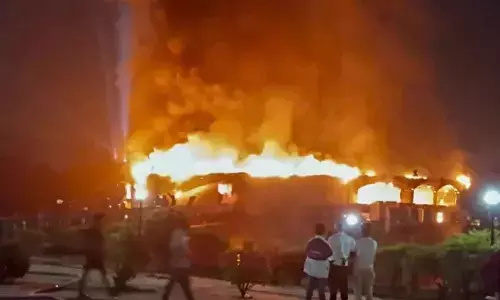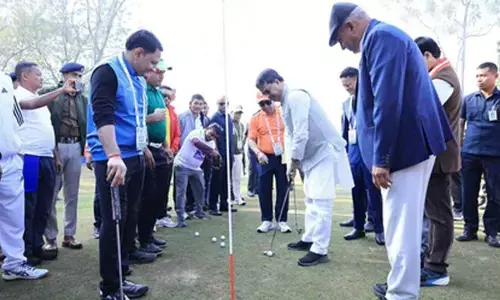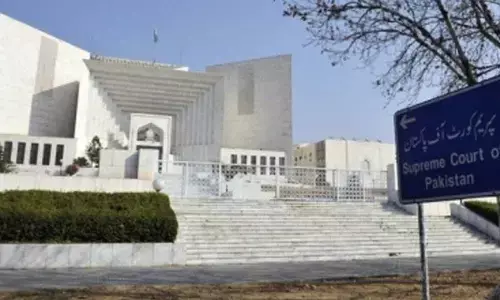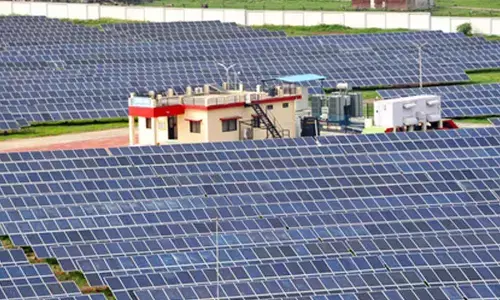Delhi's art fair reflects country's social turbulence
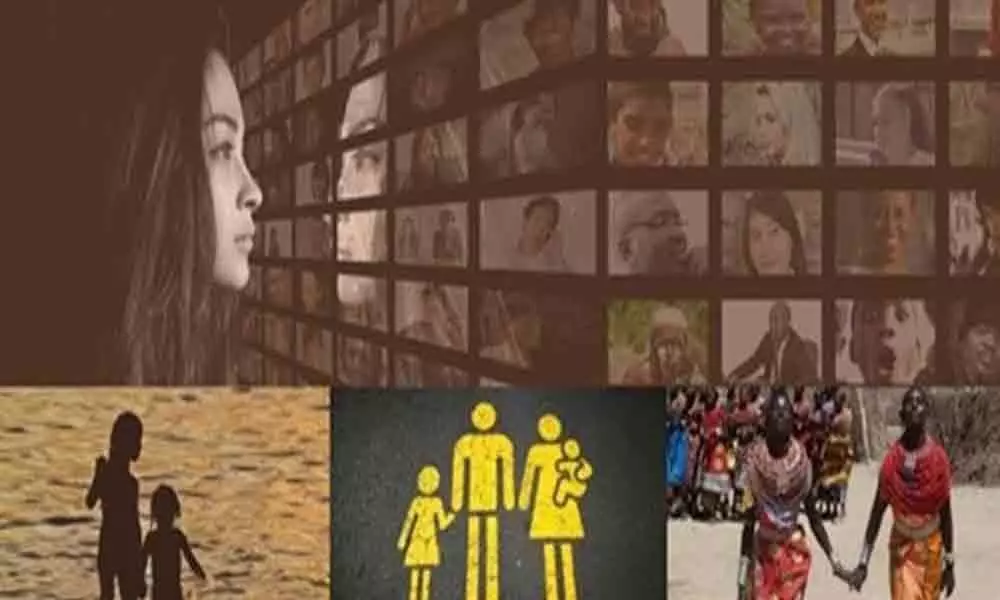
The tribe of the 'other' has emerged protagonist at the India Arts Fair with the women of Shaheen Bagh, the global refugee crisis, gender discrimination and marginalisation of the LGBTQ community among the themes adding a splash of colour and feel on the artscape.
The tribe of the 'other' has emerged protagonist at the India Arts Fair with the women of Shaheen Bagh, the global refugee crisis, gender discrimination and marginalisation of the LGBTQ community among the themes adding a splash of colour and feel on the artscape.
From wall writings and photographs to life-size installations and audio clips, artists used various mediums to make their points.
Artist Probir Gupta's mixed media installation "A Poem of Instruments" at Delhi-based gallery Anant Art's booth at the fair, which began on Friday, is a tribute to the women who have been protesting at the city's Shaheen Bagh against the new Citizenship Amendment Act (CAA).
It has been more than 45 days since the protest began and, according to Gupta, "Every protest has its foods". Food not just to feed those resisting the authority, "food" also to keep the protest running -- a microphone to unite the voices, ink to transcribe these voices, and then put them in writing on placards and on walls.
"Every protest has its foods - foods that become symbols, touch emotions and offer solidarity and succour, forging bonds that go beyond all kinds of divisiveness," the artist writes on his artwork. Also celebrating the diversity of humankind is Bangladeshi artist Tayeba Begum Lipi's installation "We Can't be the Same".
Self-explanatory, the work features five different copper-wired wigs for women. One has short hair, another has curls and a third one dons straight and long tresses, sending out the simple and urgent message of embracing the heterogeneity in society.
Drawing attention to the migrant crisis are works by artists Gigi Scaria, Arpita Singh and Ranbir Kaleka, all represented by Delhi-based Vadehra Art Gallery (VAG). Singh's paintings explore "both real and imagined realities" to speak about the effects of migration and movement.
Both her works at the fair - "Houses Big and Small" and "Another Marienbad" - are dense with roads and streets in her recognisable cartographic style, littered with images of burqa-clad women, perhaps a reference to the protestors of Shaheen Bagh.
"Singh concentrates on the narratives surrounding women and present day environments of control, movement and freedom," the gallery says. In an apparent continuation of Singh's narrative is Scaria's bronze sculpture titled "Camp".
The work comes at a time the word "detention centre" is increasingly becoming part of everyday conversations with the country-wide uproar over the CAA.
The circular, bare-bones skeletal structure of the green patina (tarnish produced due to oxidation of bronze) detention camps mirrors the transient nature of human life, particularly in the uncertainty that shrouds the lives of those displaced.
"With a cyclical notion of history symbolically represented in the shape of the camp, Scaria takes an investigative look at political realities from the evocative lens of human life, or rather the lack of it," notes the text on the booth wall.
Kaleka's digital collage, with archival inks and oil on canvas, titled, "Man with Quilt" is another work that deals with the contemporary issue of forced migration of people from their homes and homelands.
The work is ripe with a sense of belonging and the subsequent loss of it, and humankind's instinctive desire to hold on to objects and memories. It showcases a wrecked neighbourhood - burnt shop shutters, misplaced footwear, a solitary cooking pot.
In that mess can be seen a few strolling cows, a couple of stray dogs and one man carrying a "safety quilt", probably the last of his belongings that survived the destruction.
Displacement is also the central theme at the booths of Mumbai-based gallery Rukshaan Art, which has on display brick portraits by artist Girjesh Kumar, and Kolkata-based Emami Art gallery which has brought paintings by Anjan Modak.
Addressing the discrimination based on religion, gender and sexuality are artists like Shilo Shiv Suleman, Malcolm Hutcherson and Balbir Krishan.
Bengaluru-based Suleman uses magic realism to create fantastical images of empowered women, a couple of which are being showcased at the Art Musings booth. On the wall, the artist has written, "My name is Shilo Shiv Suleman.
I am the daughter of Nilofer (the blue flower). I took my mother's surname Suleman (a mountain range/ a prophet) because I was brought into the world through her and I was brought up by her. "I am the sister of 'Shaan' (pride).
I am the grand-daughter of 'Noor Jehan' (the light of the world) and 'Kamarridin' (the moon of faith). In my family line are the women 'Zubeida', 'Hamida', 'Farida', 'Waheeda'. Daughters of 'Noor' (illuminated), our names are written right to left. India (like me) is Muslim. Like India, I am also Hindu. Look (miraculous), how both faiths live inside me."
Krishan's painting "Am I Safe?" at the Italian Embassy booth raises concerns about the safety of the LGBTQ community in India, even after the decriminalisation of homosexuality Section 377 in 2018.
Krishan, an Indian gay artist now based in New York, has been a victim of violence. In 2014, an unidentified assailant attacked him and destroyed one of his artworks during an exhibition in Delhi.
At the Art Heritage booth are portraits of several members of the transgender community by contemporary documentary artist Malcolm Hutcheson.
Titled "Angelcopiers", the black and white photographs show the transgenders in "normal" light, reinforcing the rightful criticism of the prejudiced treatment meted out to the community.
The India Art Fair opened to the public on Friday and is set to continue till Sunday.








